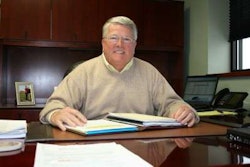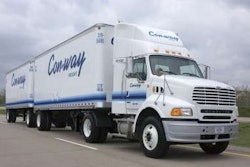Tighter emissions rules lead OEMs to an old idea- by John Baxter
Diesel engineers know increased pressure cuts particulate matter. Now, as engine manufacturers cope with the need to use high levels of exhaust gas recirculation (EGR) for NOx control, having the best possible injection system performance is more important than ever.
“With unit injectors, the rpm-pressure relationship is strictly linear,” says Tim Shick, director of business and product strategy at International Truck and Engine Corp. This means that as the engine slows down, the pumping rate in real time, along with the pressure, drops precipitously. If injection pressure is 32,000 psi at 1,800 rpm, it will drop to less than 20,000 psi at 1,100 rpm.
Shick says that even with Navistar’s decision to use enhanced EGR to meet the U.S. Environmental Protection Agency’s tighter 2010 emissions standards, “We are going to hold the line on soot.” The biggest single contributor to that ability, he says, is high-pressure common-rail injection.
“We won’t just be increasing the amount of exhaust going into the cylinder,” Shick says. “When we are increasing the EGR rate, we are increasing the injection pressure at the same time. Injection pressure equalizes the soot production.”
The present system on the MaxxForce Big Bore 11- and 13-liter engines produces in the range of 26,000 psi, but for 2010, the pressure will be more than 30,000 psi. Shick says it’s important to keep in-cylinder soot from increasing so that oil change intervals won’t shorten. With high-pressure common-rail injection, “You get 30,000 psi right after startup, at 800 rpm,” he says.
Common rail substitutes a large-diameter high-pressure pipe – which Shick refers to as “an accumulator” – and a high-pressure piston pump for the barrel and plunger of the unit injector. The pump is gear-driven off the crankshaft and keeps the rail full at the desired pressure, under ECM control. The pump has sufficient capacity to keep the rail at the desired pressure even at low rpm. Unused fuel is bypassed, but that amount is small, Shick says.
Common rail is an old idea that goes back to Rudolf Diesel’s original work. “In the past, the materials and science necessary to build such high-pressure common-rail systems did not exist,” Shick says. One of these problems was the need for the high-pressure piping needed to carry extreme pressure all around the engine, which was not available – hence the industry’s development of steadily improving unit injectors over the years.
Detroit Diesel says it actually side-stepped the piping problem; its ACRS Amplified Common Rail System used on the DD15 sends low-pressure fuel around the engine, then amplifies it to desired levels for injection using a double-ended piston near each injector. Fuel is pumped up to 13,000 psi by the fuel pump and then injected at 32,000 psi, with up to five injections per cycle, says Keith Harrington, Freightliner Trucks’ product manager. “These are not the engines of yesterday,” Harrington says. “The torque band starts at just past 1,000 rpm, and extends for 600 rpm instead of the old 300-rpm window.”
Detroit Diesel says it also substituted an energy-recycling turbo-compounding system on its DD15 for the variable geometry normally used to build backpressure for the EGR system.
Another part of International’s recipe, according to Shick, is the use of twin turbos of different sizes with what he calls “interstage cooling,” a charge-air cooler between the bigger and smaller turbos, along with the one right before the engine. A circuit of cool engine coolant will be the cooling medium for charge air. Such a system is able to get more air into the engine at a lower temperature because of more efficient charge-air cooling, Shick says.
Steve Charlton, Cummins’ director of heavy-duty engineering, stressed the company’s use of its new XPI high-pressure common-rail system as a way to allow the engine to gracefully swallow exhaust without increasing cylinder pressure. Advanced combustion chamber design, as well as the XPI system’s ability to produce high-injection pressure at low rpm, means less air is needed for soot control than with unit injectors, keeping peak cylinder pressures at moderate levels.
What are the maintenance implications of common rail? Paul Bandoly, Wix Filters’ manager of technical services and customer training, agrees with Shick and Harrington in that ultra-fine filtration still is needed. A common-rail injection pump still must run at close tolerances to produce the extreme pressure without internal leakage or horsepower waste, Shick says. The MaxxForce Big Bore engines will come standard with a Davco Fuel Pro 382 fuel processor with 50-micron filter element as a primary filter, while the engine-mounted fuel module will feature a 3-5 micron filter cartridge element.
Troubleshooting will be done mostly via software that runs on a laptop PC. Diagnostic codes will be read out of the engine ECM. The onboard diagnostics will be sophisticated enough to readily detect injector or pump or pressure regulation problems.
One job that will be gone forever with common rail will be setting unit injectors when running the overheads; there also will be no more repairs of highly stressed injector rockers. Camshafts and their geartrains will be smaller and simpler and will work under much less stress, experts say; on the ISX, the beefy injector camshaft reportedly will go away altogether. Shick says this not only reduces weight, but also cuts parasitic losses for the injection system, saving fuel and increasing payload.










